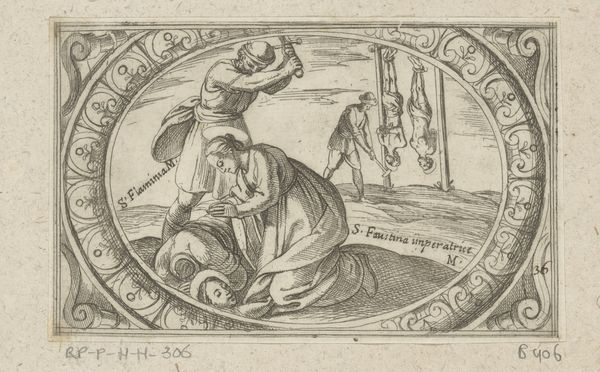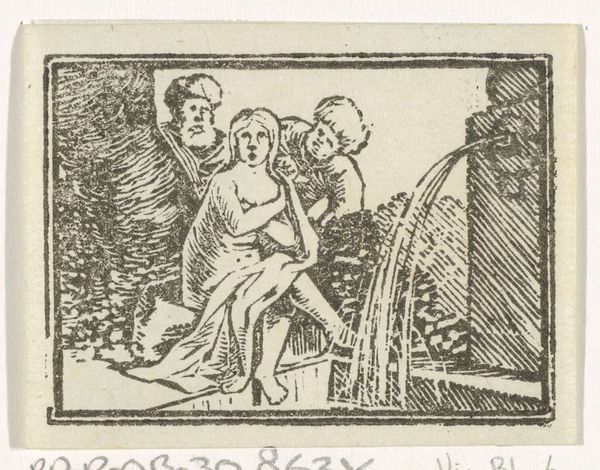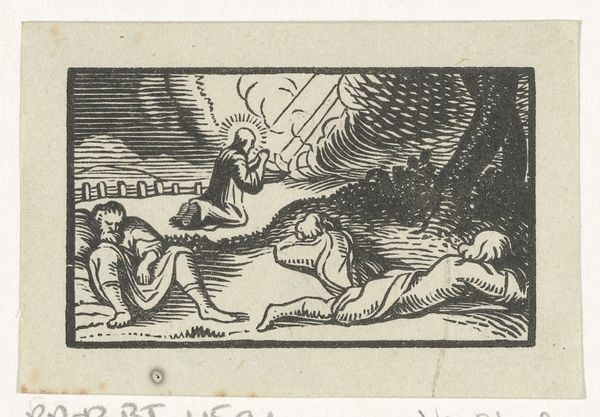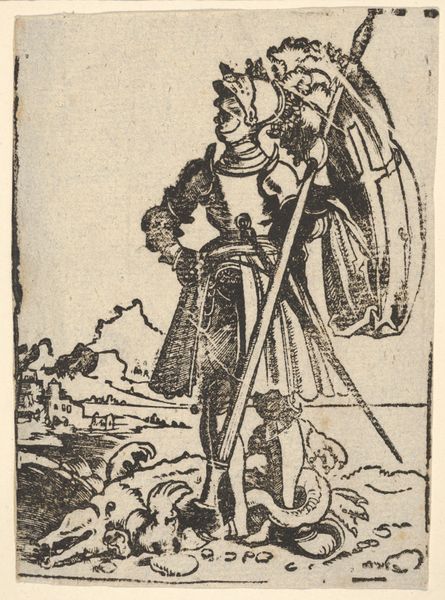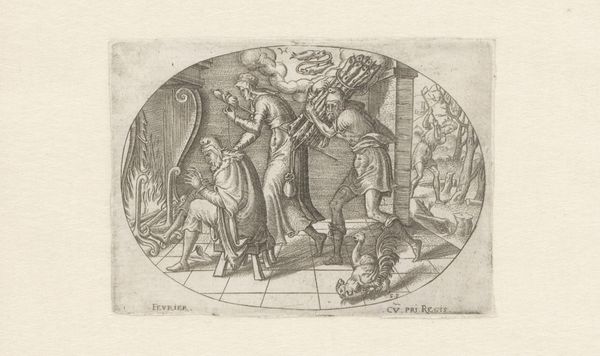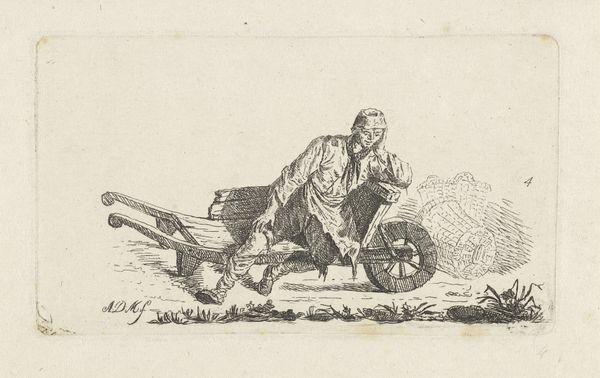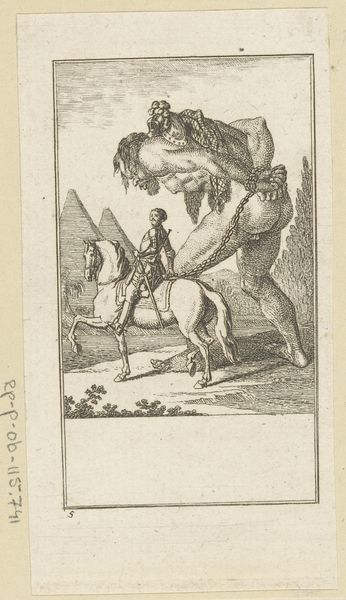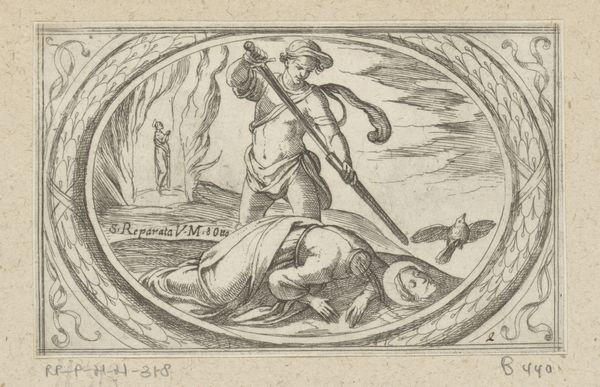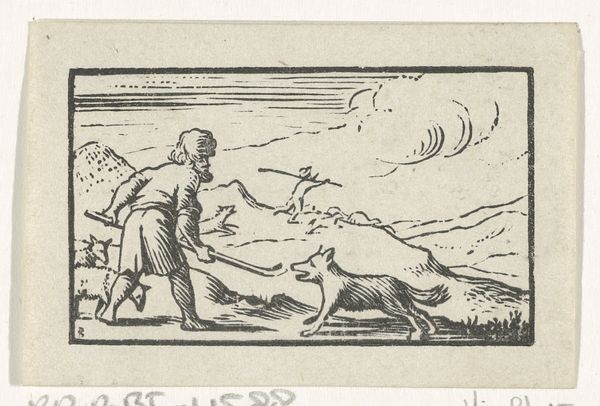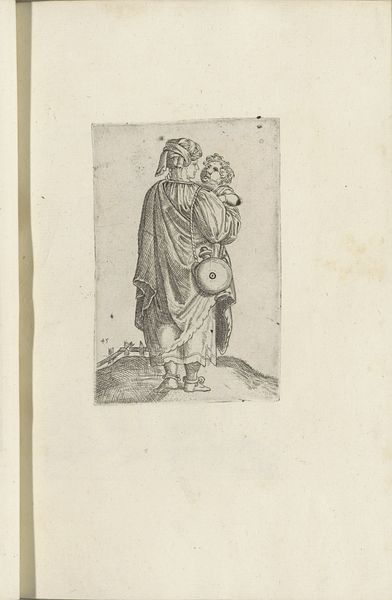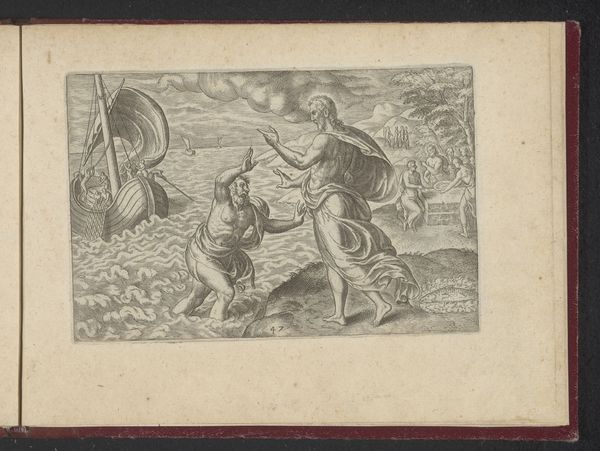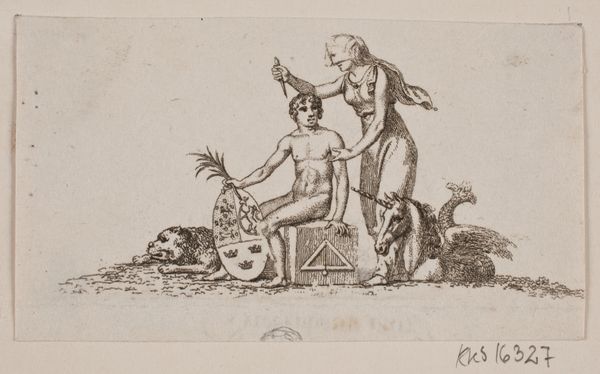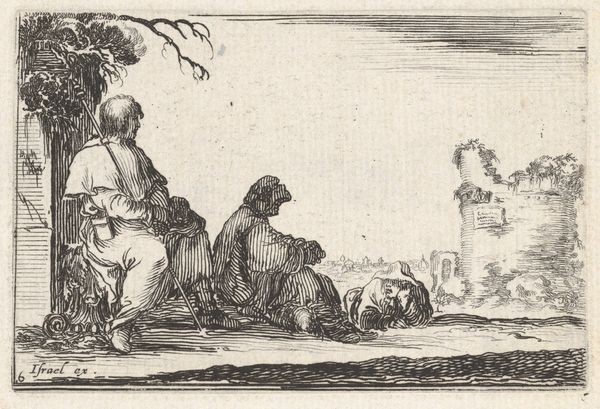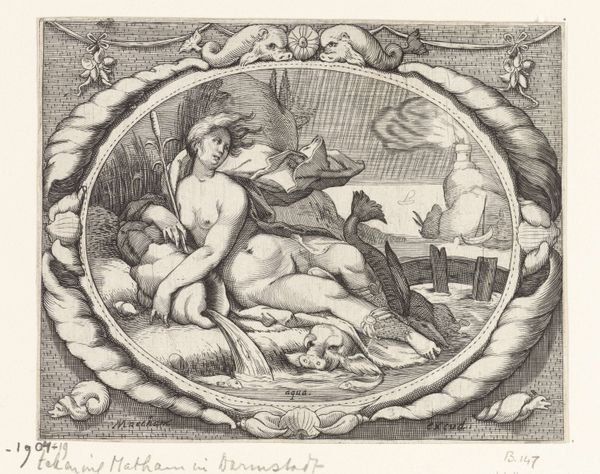
print, woodcut
# print
#
figuration
#
woodcut
#
line
#
history-painting
Dimensions: 255 mm (height) x 47 mm (width) (bladmaal)
Curator: Look at this intriguing initial, "D," from Fabricius's history of Denmark, created as a woodcut in the 19th century. It is presently held here at the SMK. The austere black lines create an almost sculptural quality. Editor: My first thought is one of constraint. There is a palpable sense of tension and restricted agency emanating from the allegorical figure intertwined within the letter and connected to the dog. Curator: Exactly, and this image reflects broader discourses on labor and societal structure. Consider the man embedded in the 'D'; his hammer could represent labour or the forging of Denmark's history. Editor: And see how the lines delineating the man's musculature are much softer, almost evocative of the idealized human form. That sharply contrasts with the bold contour of the letter "D", lending it an almost architectonic weight. Curator: The dog on a chain further emphasizes themes of domination and control that were deeply embedded in the nineteenth-century European culture. Consider, too, who this history was for: the letter 'D' marks a specific chapter, a dominant narrative. It begs the question, whose history gets told? Editor: True. Looking simply at the contrasting textures, the artist has created a surprising spatial depth despite using purely linear means. And how the textures work, almost vibrating together, emphasizes the inherent symbolic tensions in the piece. Curator: Absolutely, and perhaps even challenging normative, established narratives. Editor: A potent piece indeed, demonstrating that even a seemingly simple design can carry layered historical meanings. Curator: Precisely. It urges us to look closely at not just what is depicted but also at how history itself is constructed and perpetuated.
Comments
No comments
Be the first to comment and join the conversation on the ultimate creative platform.
